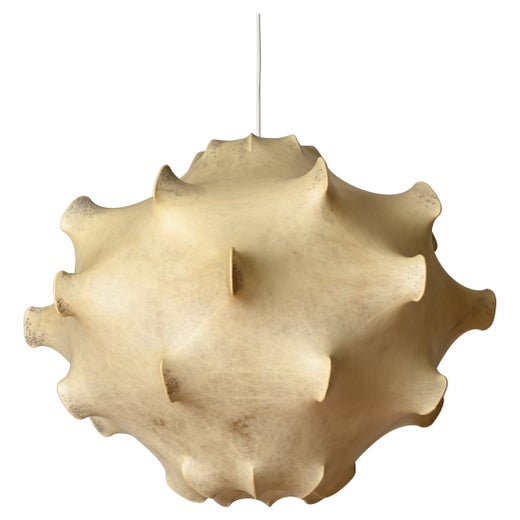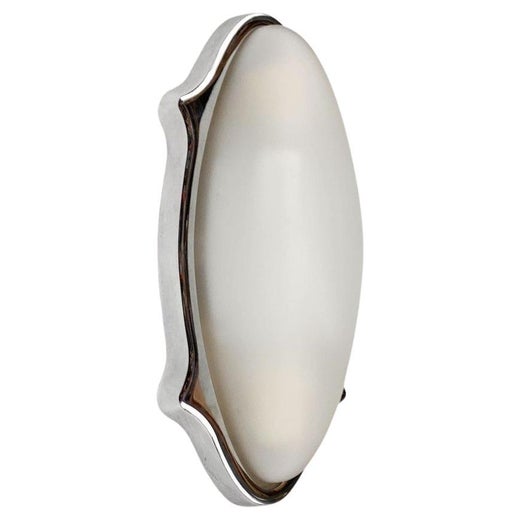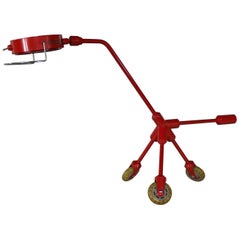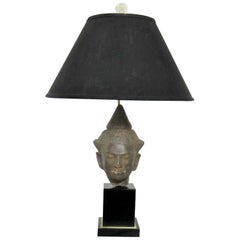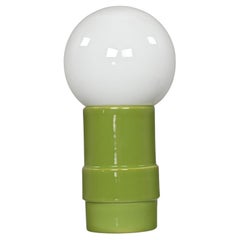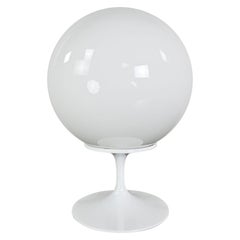Vintage Pair Tikal 1555 Table Lamps by Pier Giuseppe Ramella for Flos-Arteluce
About the Item
- Creator:
- Dimensions:Height: 17.25 in (43.82 cm)Width: 19.5 in (49.53 cm)Depth: 7.5 in (19.05 cm)
- Sold As:Set of 2
- Style:Modern (Of the Period)
- Materials and Techniques:
- Place of Origin:
- Period:
- Date of Manufacture:circa 1980
- Condition:Wear consistent with age and use. Their condition is flawless except for the following: the off-white lens on one of the lamps has yellowed slightly; and one of the plastic lens fasteners on that lamp has been repaired. And the outer cover of one of the cords is worn.
- Seller Location:Topeka, KS
- Reference Number:Seller: 414-LTG-0291stDibs: LU187336251943
Flos
Imaginative lighting is a longtime hallmark of modern Italian design. Following in the footsteps of innovative companies such as Artemide and Arteluce, the company FLOS brought a fresh aesthetic philosophy to the Italian lighting field in the 1960s, one that would produce several of the iconic floor lamp, table lamp and pendant light designs of the era.
FLOS — Latin for “flower” — was founded in the northern town of Merano in 1962 by Cesare Cassina (of the famed Cassina furniture-making family) and Dino Gavina, a highly cultured businessman who believed that artistic ideas espoused in postwar Italy could inform commercial design. The two enlisted brothers Achille and Pier Giacomo Castiglioni as their first designers.
Even before FLOS was formally incorporated, the Castiglionis gave the firm one of its enduring successes with the Taraxacum pendant and associated designs made by spraying an elastic polymer on a metal armature. (George Nelson had pioneered the technique in the United States in the early 1950s.) For other designs, the brothers found inspiration in everyday objects. Suggestive of streetlights, their Arco floor lamp, with its chrome boom and ball-shaped shade sweeping out from a marble block base, has become a staple of modernist decors. Designing for FLOS since 1966, Tobia Scarpa has also been inspired by the commonplace. His folded-metal Foglio sconces resemble a shirt cuff; his carved marble Biagio table lamp looks like a jai alai basket.
In 1973, FLOS purchased Arteluce, the company founded in 1939 by Gino Sarfatti, and it continues to produce his designs. In recent decades, FLOS has contracted work from several noted designers, including Marcel Wanders and Jasper Morrison. As instantly recognizable as they are, many FLOS designs remain accessible. While FLOS lighting is the essence of modernity, its sleek, subtle designs can be used to strike a sculptural note in even traditional spaces.
Browse a broad range of FLOS lighting fixtures at 1stDibs.
Arteluce
The lighting maker Arteluce was one of the companies at the heart of the creative explosion in postwar Italian design. The firm’s founder and guiding spirit, Gino Sarfatti (1912–85), was an incessant technical and stylistic innovator who almost single-handedly reinvented the chandelier as a modernist lighting form.
Sarfatti attended the University of Genoa to study aeronautical engineering but was forced to drop out when his father’s company went out of business. His mechanical instincts led him to turn his attention to lighting design — and he founded Arteluce as a small workshop in Milan in 1939. Sarfatti’s father was a Jew, so the family fled to Switzerland in 1943, but after the war — largely thanks to Sarfatti’s insistence on efficiency of design and manufacture — Arteluce quickly established itself as a top firm.
Though Sarfatti continued as chief designer through the 1950s and ’60s, he also enlisted other designers such as Franco Albini and Massimo Vignelli to contribute work. Sarfatti sold Arteluce to FLOS — a rival Italian lighting maker — in 1973 and retired to pursue a more traditional avocation: collecting and dealing rare postage stamps.
Sarfatti is regarded by many collectors as a pioneer of minimalist design. He pared down his lighting works to their essentials, focusing on practical aspects such as flexibility of use. His most famous light, the 2097 chandelier, is a brilliant example of reductive modernist design, featuring a central cylinder from which branches numerous supporting fixtures extending like spokes on a wheel.
Similarly, Sarfatti's 566 table lamp is a simple canister, able to be raised or lowered on a stem, holding a half-chrome bulb. Despite the marked functionality of his designs, Sarfatti did have a sprightly side: His 534 table lamp, with its cluster of rounded enameled shades, resembles a vase full of flowers, the Sputnik chandelier (model 2003) was inspired by fireworks and the brightly colored plastic disks of the 2072 chandelier look like lollipops. No matter the style, Sarfatti concentrated first and foremost on the character of light created — and any Arteluce lamp is a modernist masterpiece.
Find vintage Arteluce table lamps, chandeliers, floor lamps and other lighting on 1stDibs.
You May Also Like
Vintage 1980s Italian Table Lamps
Metal
Late 20th Century Italian Mid-Century Modern Table Lamps
Steel
Vintage 1980s Italian Post-Modern Table Lamps
Metal
Vintage 1980s Italian Mid-Century Modern Table Lamps
Metal
20th Century Italian Table Lamps
Glass
Vintage 1980s Italian Post-Modern Table Lamps
Metal
Vintage 1980s Italian Post-Modern Table Lamps
Metal
Vintage 1980s Italian Post-Modern Table Lamps
Metal
Vintage 1980s Italian Post-Modern Table Lamps
Glass, Acrylic
Mid-20th Century Italian Post-Modern Table Lamps
Metal
More From This Seller
View All21st Century and Contemporary Modern Table Lamps
Steel
Mid-20th Century American Hollywood Regency Table Lamps
Brass
Vintage 1970s American Mid-Century Modern Table Lamps
Ceramic, Milk Glass
Mid-20th Century American Mid-Century Modern Table Lamps
Metal
Vintage 1960s Italian Mid-Century Modern Table Lamps
Brass
Late 20th Century American Modern Table Lamps
Fabric, Plastic, Plaster
